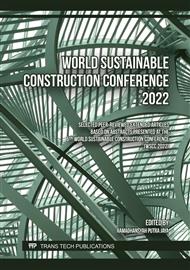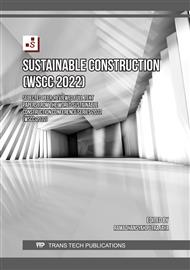p.101
p.115
p.127
p.139
p.153
p.161
p.171
p.181
p.195
The Potential Use of Palm Oil Clinker as Drainage Layer in Extensive Green Roof System: Runoff Quality Assessment
Abstract:
Green roof technology has demonstrated the potential environmental benefits of building indoor thermal performance, eliminating air pollutants and reducing runoff flows to the drain. In addition, the green roof was used as a plant growth medium for the soil element, and several interactions were created between the two strands. Malaysia has become the world's second-largest exporter of palm oil. However, the process of extracting the oil from the fruit will produce a byproduct known as palm oil clinker (POC) that will contribute to increasing landfill area. Since the POC is a waste material, the potential of chemical reaction to the plant development and runoff quality needs to be carried out. Therefore, this study investigates the potential of using palm oil clinker as a drainage layer in green roof systems in terms of plant development and runoff quality. The extensive green roof (EGR) specimens were prepared and the POC was used to replace the conventional drainage layer in the green roof system. In addition, physical and chemical tests were carried out in the laboratory to ascertain the result including the turbidity, total suspended solids (TSS), pH, and chemical oxygen demand (COD) test. Based on the results, although the COD and TSS are high, it is still within an acceptable range set by National Water Quality Standard (NWQS). The data analysed by using the quantitative data analysis techniques have shown that the POC has a good potential to be used as a drainage layer in the green roof system.
Info:
Periodical:
Pages:
153-160
Citation:
Online since:
March 2023
Keywords:
Price:
Сopyright:
© 2023 Trans Tech Publications Ltd. All Rights Reserved
Share:
Citation:



